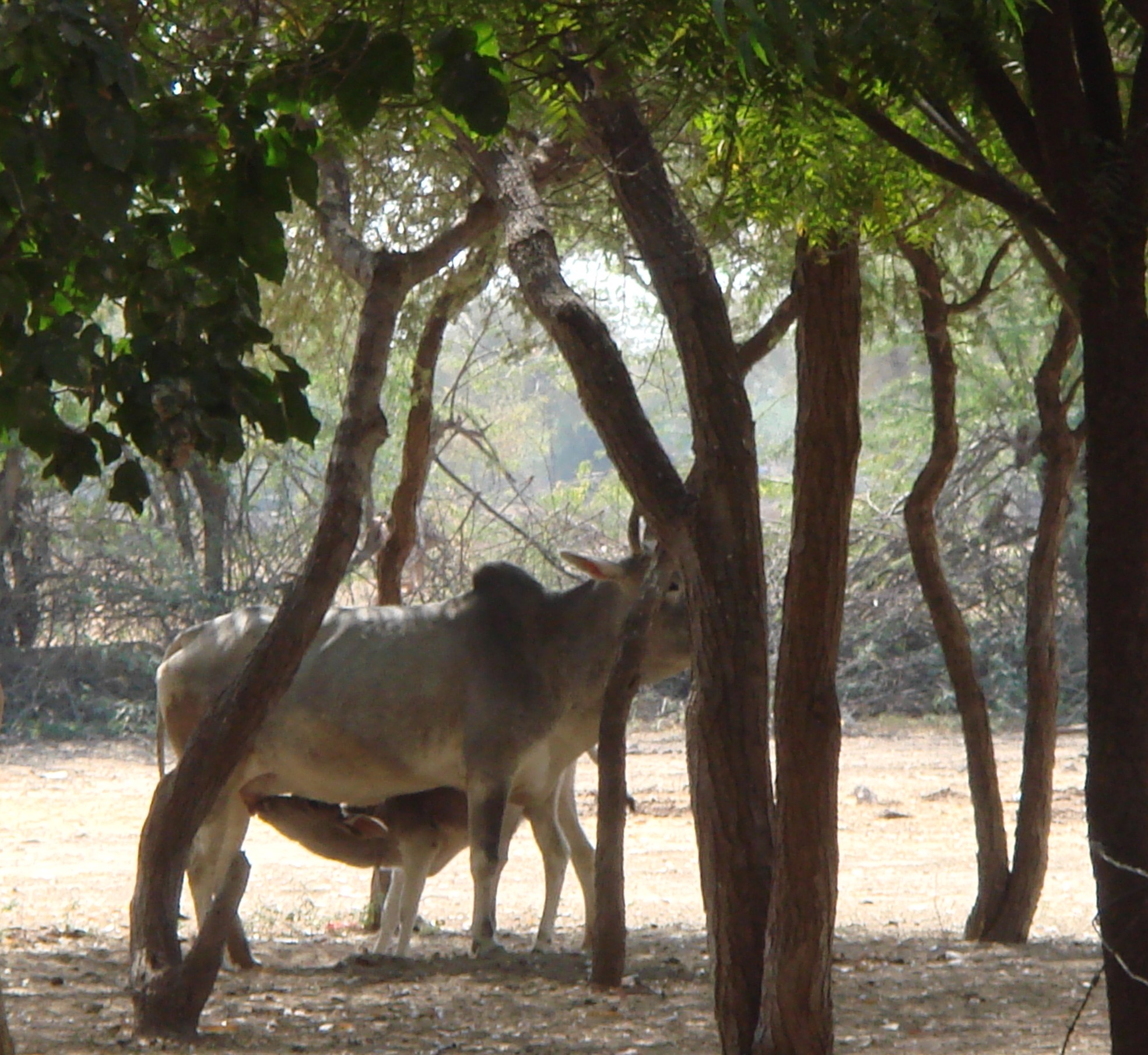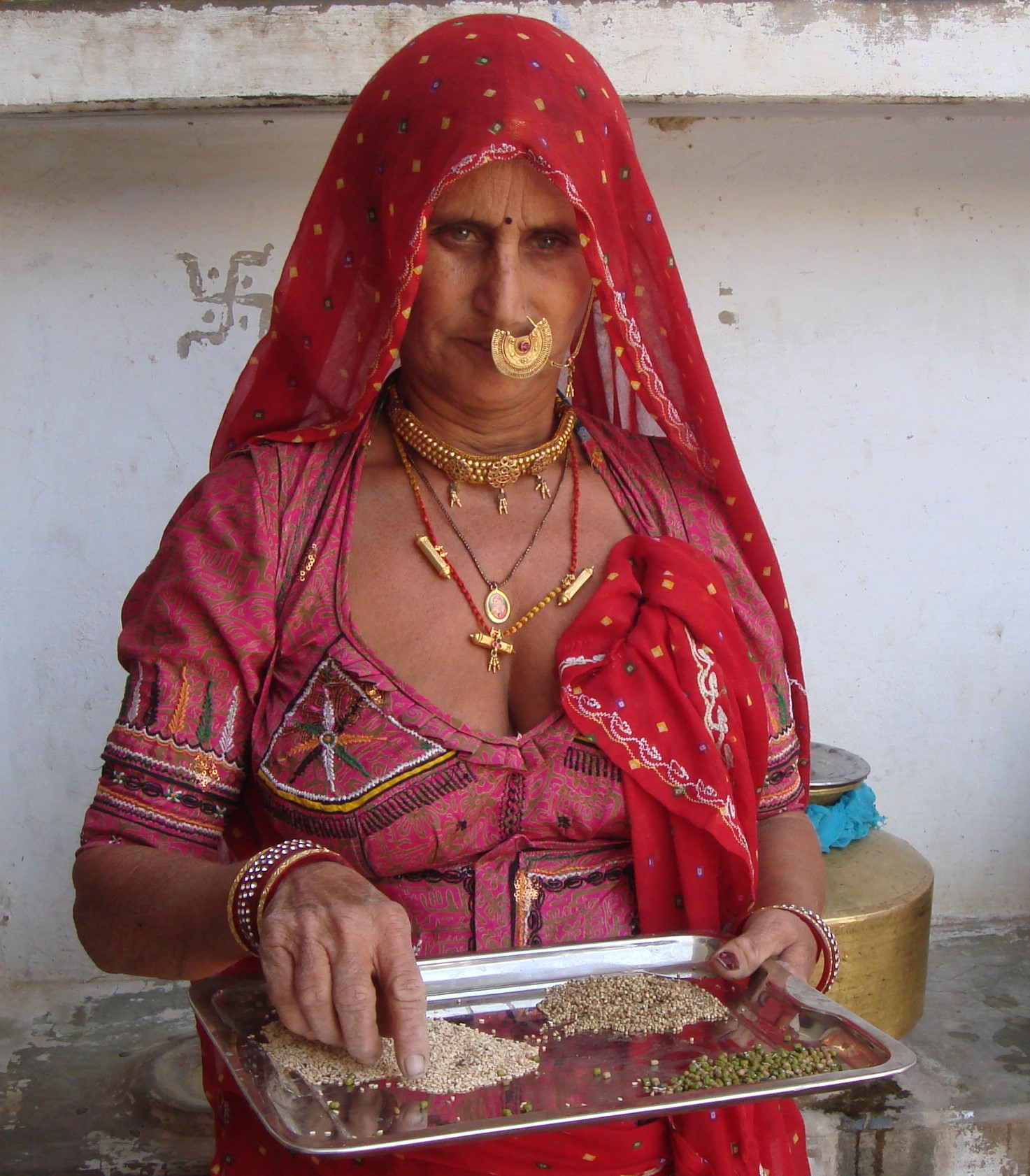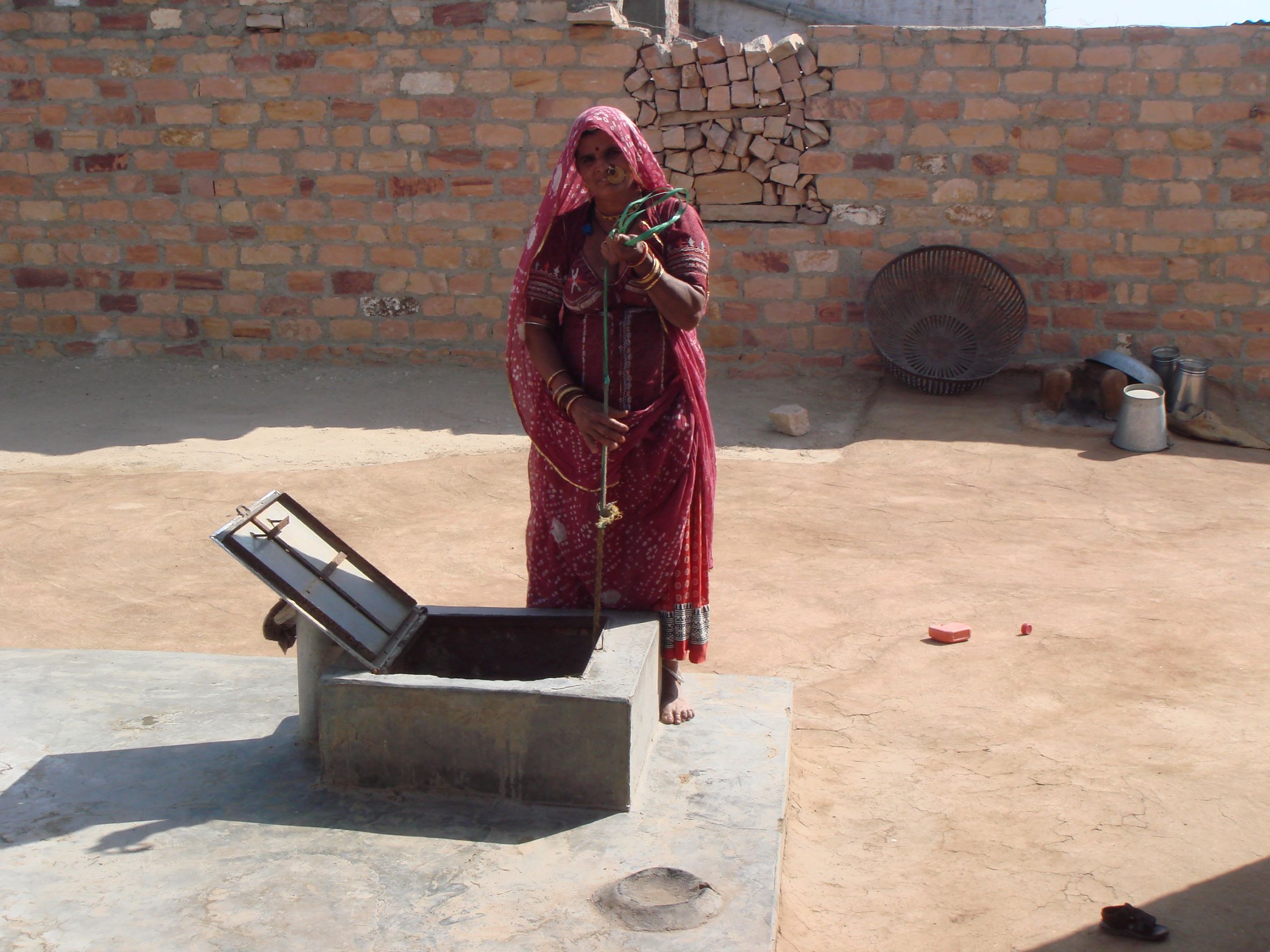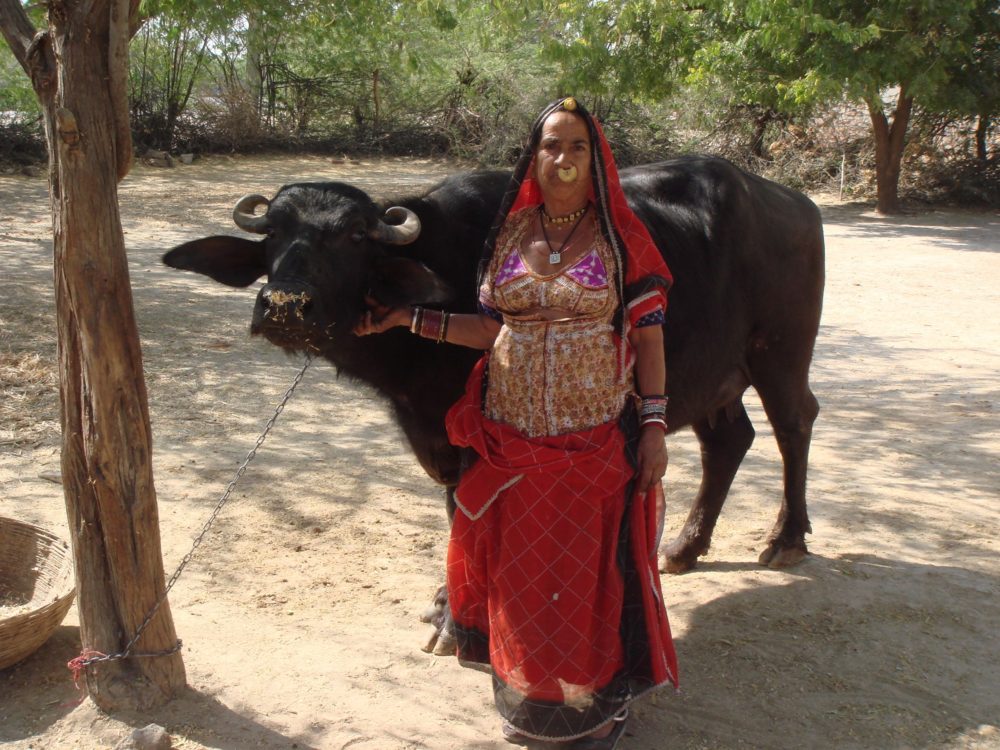By Neena Bhandari
Guda Bishnoiyan & Khejarli villages (Rajasthan), India, 04.03.2012 (WFS/The Hindu): Traditional western Rajasthani delicacies are fast becoming a gourmet’s delight in India and abroad. In fact, no Marwari feast is complete without the ‘exotic’ Sangari, cooked as a dry vegetable or with gravy. This fruit of the versatile Khejari (Prosopis cineraria) tree, indigenous to the vast Thar Desert, has provided nutrition and nourishment to the local communities for generations.
As the sun rises on the eastern skyline, Chunni Bishnoi, 65, begins milking her three buffaloes and three cows in the outer courtyard of her `pucca house’, shaded by the thorny Khejari trees that grow thick and green in the villages of Guda Bishnoiyan, 22 km, and Khejarli, 26 km south-east of Jodhpur in the western Indian state of Rajasthan.

The Khejari is held sacred by the local Bishnoi community, who practice agriculture and animal husbandry. An extremely drought resistant tree, its long needle-like nutritive fruit, Sangari, is a staple in Chunni’s home, as in most homes here. She uses its branches as fuelwood, the leaves are dried and used as fodder for the cattle, the thorny twigs are used to build fences, and the wood is used for furniture.
The women of these villages have mastered the optimum use of indigenous fruits and vegetation, which have been traditional sources of survival for generations in this hot and dry land, especially during drought.
Sangari can be dried and stored for an unlimited period and cooked whenever required. There’s also Kair (Capparis decidua), an ideal source of nutrition, rich in minerals like calcium, phosphorus, iron, as well as protein and carbohydrates. It can be cooked as a fresh vegetable or preserved and stored for use around the year. Today, Kair has made it to five-Star hotel menus and its pickle is exported all over the world. Kumatiya (Acacia senegal) is another small circular, flat, black-brown fruit, which is a rich source of fibre and cooked in various forms, most commonly with Sangari and Kair.

Once cooked, these vegetables can be eaten for days and don’t need refrigeration. Eighteen-year-old Shobha Panwar knows this well. “I had to quit school after class X to help with household chores because both my parents work on construction sites”, she says as she lights the wood-fired chullah (stove) to prepare the morning meal.
Unlike the rich in her village, their family only has one goat, which yields just enough milk to suffice for tea. They mostly eat bajre ki roti (Millet flatbread) in winters and gehun ki roti (Wheat flatbread) during summers with indigenous Sangari, Kachra mirchi (local cucumber cooked with green chillies) or kande ki sabji (onion vegetable).

The staple diet in these villages continues to be bajre ki roti, milk, ghee, yogurt and buttermilk (chach) although food habits in nearby Jodhpur city are changing and “junk food” is gaining popularity.
Dr Neelam Wason, professor in food and nutrition at the Jai Narain Vyas University in Jodhpur explains, “The preparation of traditional vegetarian Rajasthani food among the rich and poor in these two villages is almost the same. The difference lies in the consumption of expensive food items like fruits, which the rich bring home while returning from the city. Ghee, milk and milk products form an important part of rich people’s regular diet, but the poor can only afford buttermilk or chach”.
Traditional western Rajasthani cuisine has evolved over centuries to suit the harsh climatic conditions. Most dishes can last a long time without heating or cooling.

Samdhu Bishnoi, 60, who lives in nearby Chhota Guda village and has five cows and five buffaloes says, “Til ke laddoo (Gingelly seeds bound into small balls with ghee and jaggery), Rabori (Bajra cooked with buttermilk and sun-dried) can last for an entire season. Panchkuta, which includes sangari, kair, kumatiya, red chillies and goonda (Cordia mixa), can also last for weeks. Since we have plenty of milk and ghee, we make kheer (milk cooked with rice or sago), aata and sooji ka halwa (wheat flour or semolina cooked with ghee and jaggery)”.
Shedding light on the nutritive value of these local preparations, Dr Wason, who has been working in Jodhpur for the past 30 years says, “Cereals – wheat, pearl millet (Bajra), sorghum (Jowar), and pulses – whole and split Bengal gram (chana), green gram (moong), moth beans (moth) are source of protein and energy in their diet”.
“Til (Gingelly seeds) and methi dana (fenugreek seeds) are also a good source of protein, energy and iron. Jaggery is a good source of iron in rural diets while the local and seasonal vegetables provide vitamins and fibres. Kachra (Cucumis callosus), radish and green chilies, eaten raw, are source of Vitamin- C”, she adds.
Nutritive value of foods per 100 gram according to the Indian Council of Medical Research.
| Hindi name | English name | Protein (g) | Energy (Kcal) | Iron (mg) |
| Bajra | Pearl millet | 11.6 | 361 | 8.0 |
| Gehun | Wheat | 12.1 | 341 | 4.9 |
| Jowar | Sorghum vulgure | 10.4 | 349 | 4.1 |
| Suzi | Semolina | 10.4 | 348 | 1.6 |
| Chana | Whole Bengal gram | 17.1 | 360 | 4.6 |
| Moong | Whole green gram | 24.0 | 334 | 4.4 |
| Moth | Moth beans | 23.6 | 343 | 7.58 |
| Methi dana | Fenugreek seeds | 26.2 | 333 | 6.5 |
| Til | Gingelly seeds | 18.3 | 563 | 9.3 |
| Gwar ki phalli | Cluster beans | 3.2 | 16 | 1.08 |

To cook food, most homes use fuelwood (Prosopis juliflora) or dried cattle dung cakes, barring the rich, who have gas stoves. Asha Shravan, 25, of Khejarli village, who has three children studying in a private school, is one of the fortunate ones to have a gas stove.

Most women like Baby Kumari, 38, mother of six children, walk for up to three hours daily to fetch fuelwood. Her husband works in a kirana (grocery) store and they can’t afford milk sold at Rs 30 a kg. Even wheat is too expensive for them.
But she is not complaining as they have running tap water. In this parched land, villagers are extremely conscious of water harvesting. Almost every house has a `tanka’ or underground water storage structure. In nearby Chhota Guda village, Sugna Bishnoi is drawing water from her `tanka’. She says, “We don’t have running water so we have to buy a tanker of water for Rs 300 once a month.”

For centuries, the Bishnoi community has warded off starvation by scrupulously preserving the patches of green cover around their settlements. During the mid-15th century, this region had experienced an eight-year long drought in which many people and cattle perished.
A young man of Pipasar village, Jambaji, then realised that in the past his clan had survived drought because of the abundance of trees in the area. But deforestation had destroyed this support system.
Jambaji distilled his thoughts into 29 principles, which he taught to his people: Cut no living tree and kill no animal; grow indigenous trees like Khejari. Their faith was put to the test when Maharaja Abhay Singh of Jodhpur decided to build a new palace in 1730. The masons needed lime for the building. There was limestone available, but it had to be baked. So, they decided to cut down some Khejari trees for fuel, but the Bishnois objected.
Anxious to protect the trees, a local woman, Amrita Devi, and her three daughters ran out and hugged the trees. The Maharaja’s soldiers hacked them down. Other Bishnois came forward and they too were killed. As many as 363 people from 84 villages died resisting the onslaught. The people’s revolt forced the Maharaja to give in. The repentant king then conferred on the valiant clan the right to prevent felling of trees and killing of wildlife in their area.
The Bishnois formed a jury to oversee issues related to deforestation and hunting. The penalty was mostly paid in grain for the birds or fodder for the cattle. The hunter was not allowed to take away the kill, which was buried with full rites. This was when hunting was still a sport and royal pastime.
Even today, the Bishnois uphold their 500-year-old tradition of conservation in Rajasthan, tending groves of tall trees around their villages and protecting animals from poachers. The Guda lake, near their villages, attracts hundreds of migratory birds every year.
The environment-friendly Bishnoi community can certainly teach the world a thing or two about sustainable living, conservation, and most importantly, how to extract a nutritious meal from arid environs and sandy soils.
© Copyright Neena Bhandari. All rights reserved. Republication, copying or using information from neenabhandari.com content is expressly prohibited without the permission of the writer and the media outlet syndicating or publishing the article.



So nostalgic and well articulated. Loved refreshing my memory.